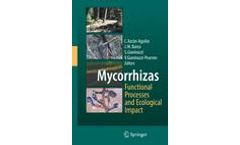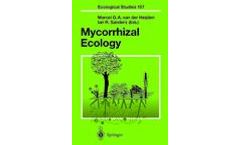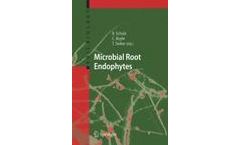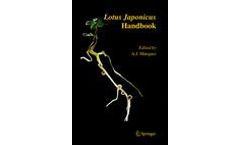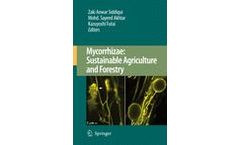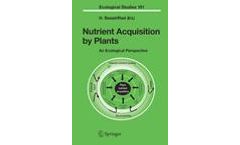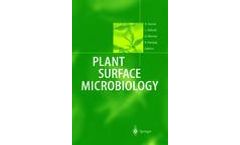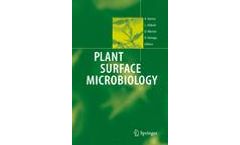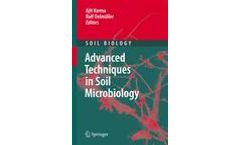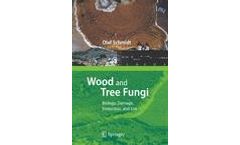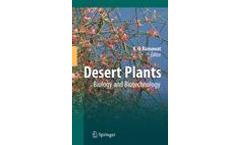mycorrhizal books
28 books found
The first multidisciplinary analysis of principles and case studies on ethnomycology and fungal biotechnology, covering biological control, mycorrhizal fungi and applied mycology. ...
Mycorrhizal symbioses are central to the multitrophic interactions that impact plant productivity, competitiveness and survival. This book integrates present-day knowledge from well-known research groups on some of the topics which are at the forefront of mycorrhizal research. Topics include the cell programmes that drive mycorrhiza formation and function, the ...
One of the best-known examples of a mutualistic interaction is the mycorrhizal symbiosis formed between soil fungi and the majority of plants. ...
Plant roots may not only be colonized by mycorrhizal fungi, but also by a myriad of bacterial and fungal root endophytes that are usually not considered by the investigators of classic symbioses. This is the first book dedicated to the interactions of non-mycorrhizal microbial endophytes with plant roots. The phenotypes of these interactions can be extremely ...
This book is highly recommended on the basis of the following points: - The editors are highly regarded in the field of mycorrhizal biology and one is co-author of the most comprehensive textbook on mycorrhizas; - Chapters by international experts based on invited presentations at the 3rd International Conference on Mycorrhizas, supplemented by invited chapters on special ...
They are a key component of sustainable agricultural systems because of symbiotic nitrogen fixation and other beneficial symbiosis with mycorrhizal fungi. Studies on most of the major leguminous crops are hampered by large genome sizes and other disadvantages which have hindered the isolation and characterisation of genes with important ...
It falls into a time period with an exceptionally rapid growth in mycorrhizal research. A vast expansion of interest in mycorrhiza is manifest worldwide, resulting in public awareness that the productivity of plants and the quality of leaves, flowers, fruits and seeds are determined by the activities of root systems and ...
In this work, many of the best researchers in the field review the current status of research in plant-fungal communications, mycorrhizal organisms, applications, and biotechnology. The focus is a ...
Mycorrhiza will be the focus of research and study for the coming decade. Successful survival and maintenance of plant cover is mostly dependent on mycorrhization. During the last decade about ten books have appeared on various aspects of mycorrhiza, including two on methodology. The present book has been compiled to give a complete and comprehensive description of the topic to the students ...
'The fundamental problem the world faces today, is the rapidly increasing pressure of population on the limited resources of the land. To meet the ever increasing demands of expanding populations, agricultural production has been raised through the abundant use of inorganic fertilizers, the adoption of multicropping systems and liberal application of chemical pesticides (fungicides, ...
Mycorrhizal fungi are microbial engines which improve plant vigor and soil quality. ...
This book is the most up-to-date and comprehensive review of our knowledge of the management of mycorrhizas in agriculture, horticulture and forestry. It contains twenty-four reviews written by leading international scientists from eight countries. The reviews consider the ecology, biology and taxonomy of arbuscular and ectomycorrhizal fungi, the information and functioning of mycorrhizas ...
Adaptation and evolution of terrestrial plants depend, to a large extent, on their ability to acquire nutrients. This is a modern and integrative treatment of the mechanisms controlling plant nutrient uptake and how plants respond to changes in the environment. The following key topics are covered: soil nutrient bioavailability; root responses to variations in nutrient supply; nitrogen fixation; ...
Most plants rely on the co-existence with microorganisms: both groups benefit from these symbioses. It has been shown that a large number of specific genes in plants and microorganisms are only activated during these interactions. Of course, various microbes also act as pathogens. Interactions between plants and microorganisms are often located on plant surfaces, such as leaf cuticles, seeds and ...
Most plants rely on the co-existence with microorganisms: both groups benefit from these symbioses. It has been shown that a large number of specific genes in plants and microorganisms are only activated during these interactions. Of course, various microbes also act as pathogens. Interactions between plants and microorganisms are often located on plant surfaces, such as leaf cuticles, seeds and ...
Mycorrhiza - the symbiosis between plants and fungi - plays a key role in plant life. This book reviews for the first time the current knowledge of 15 individual genera of ectomycorrhizal fungi. It is unique in that each chapter is dedicated to a single fungal genus, each written by internationally recognized experts on the respective fungal genera. It is thus an invaluable reference source for ...
"Advanced Techniques in Soil Microbiology" presents a wide range of biotechnological methods for application in soil microbiology analysis. These include all essential methods involving molecular biology, immunology, microbiology, and structural biology, such as transcriptome analysis, RNAi technology, molecular matchmaking, RAPD, T-RFLP and FT/MS. The techniques and procedures have been selected ...
The book represents results of 20 years' worth of ecological investigation of alpine ecosystems in the Northwest Caucasus. Plant geographical description of the area, syntaxonomy, spatial patterns, floristic richness, structure of plant communities in relation to soil properties and herbivore influence were described for a mountain region that is difficult to access. Seasonal, inter-annual, and ...
"Wood and Tree Fungi" provides an up-to-date overview of the various wood and tree fungi that damage trees, lumber, and timber, with special focus given to identification, prevention, and remediation techniques. First, the fundamentals of cytology and morphology, growth and reproduction, formal genetics, and enzymatic wood decay are addressed. Causative factors are then analyzed, followed by ...
Vast areas of Earth's landmass exist as deserts, representing quite distinct ecosystems. Desert plants and animals have evolved specialised survival strategies to cope with the harsh environment of high temperatures and scarce water resources. The life-supporting vegetation of deserts is characterised by its unique reproductive biology, metabolism and adaptive characters. Plants like Prosopis ...


